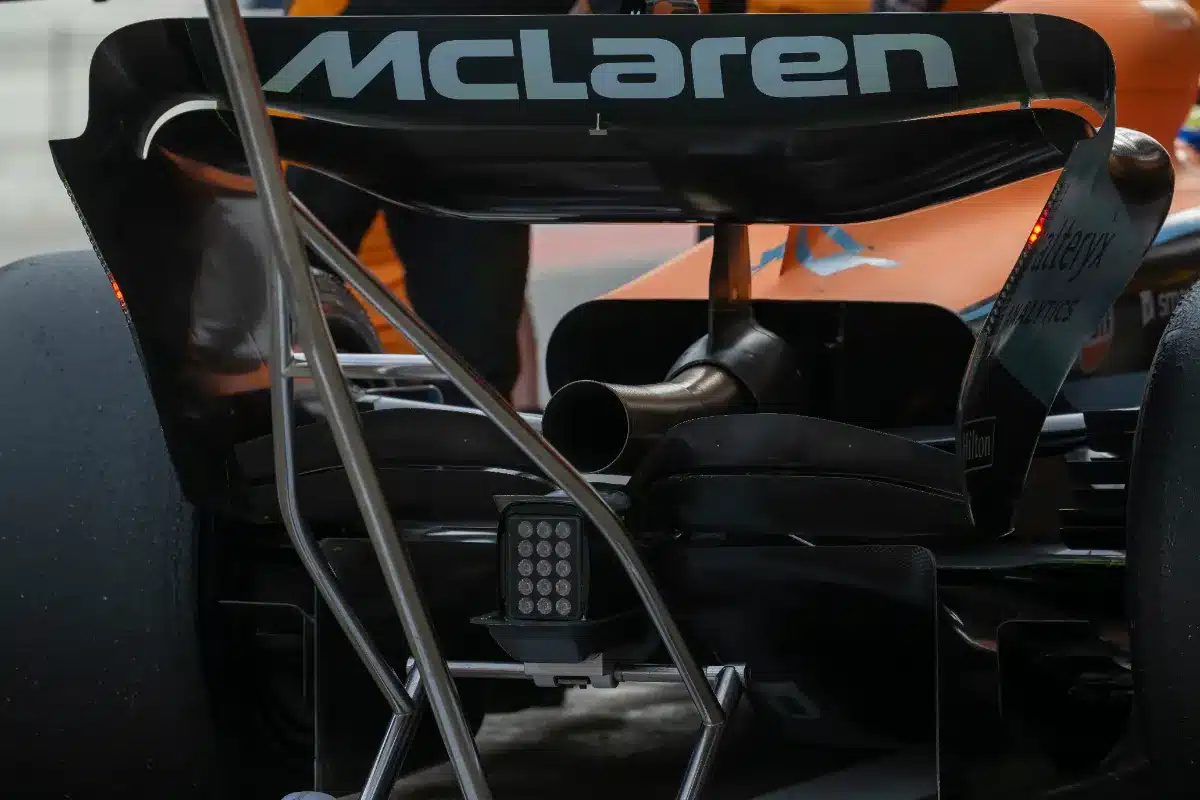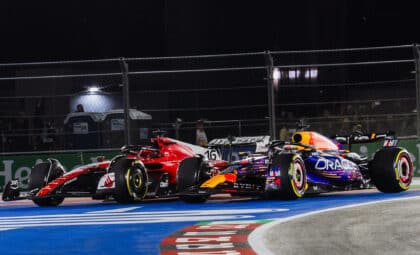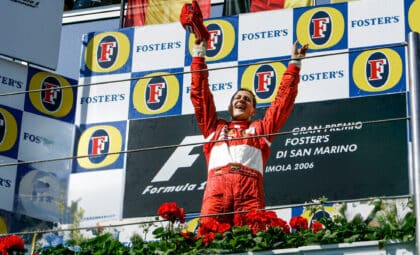In the high-stakes world of Formula 1 where every millisecond matters, McLaren’s engineering choices have made a daring move with its engineering choices to boost the performance of its cars, driven by Lando Norris and Oscar Piastri. These decisions show a solid commitment to innovation and taking calculated risks (keeping up the momentum from last season). The engineering team at McLaren is all in when it comes to pushing technical boundaries to stay ahead in this ultra-competitive sport.
A game-changing suspension setup
At the core of McLaren’s new approach is a radical take on suspension design. The team revamped both the front and rear suspensions, paying close attention to the height differences between where the front arms (upper triangle) and rear arms attach. This method, originally thought up by Adrian Newey on the RB19, has been pushed even further by McLaren.
The front suspension sports a unique setup with the front arm fixed higher on the chassis than the rear arm. This clever design helps fight off the tendency for the car to nosedive during braking (keeping the car stable). Initially, this significant height difference raised some eyebrows among Red Bull engineers at the start of the season.
At the rear, McLaren engineered the suspension so that the rear arm of the upper triangle sits higher than the front one, preventing too much lift during acceleration. This means McLaren now boasts the biggest height difference among current F1 cars—clear proof of their readiness to push the envelope.
Boosting stability and aerodynamics
McLaren’s engineering moves don’t stop at suspension tweaks—they extend into stability and aerodynamics too. Their setup brings impressive stability to the aerodynamic platform while fine-tuning underbody performance at different angles of dive, roll, and pitch. When the car dives under braking, it forces the front wing to work overtime, shifting the aerodynamic pressure center forward. Once braking ends and the car accelerates, that center slides back (this is especially noticeable with the ground effect tunnels in modern F1 cars).
By keeping these shifts in check, McLaren’s advanced suspension system helps the car sit lower to the ground, which ramps up downforce—a key ingredient for top-notch track performance.
More performance tweaks
On top of their innovative suspension design, McLaren is using other tweaks like a creative front suspension and camber adjustments. Together, these elements mesh perfectly with Lando Norris’s strategic tire plan to boost speed and agility on race day. We’ll dive deeper into these additional tweaks in future discussions as McLaren fine-tunes its strategy for peak performance.
As Formula 1 becomes ever more technical, McLaren’s bold moves in the engineering department show off their commitment to innovation and excellence. By shaking up the norm and embracing technical risks, they carve out a unique place in the world of automotive engineering.
McLaren’s journey is not only a bid for victory but also a push into uncharted territory in motorsport technology. For fans and industry insiders alike, these advancements are a reminder of how stepping off the beaten path can spark success—and maybe even inspire others to take similar leaps into new frontiers.









